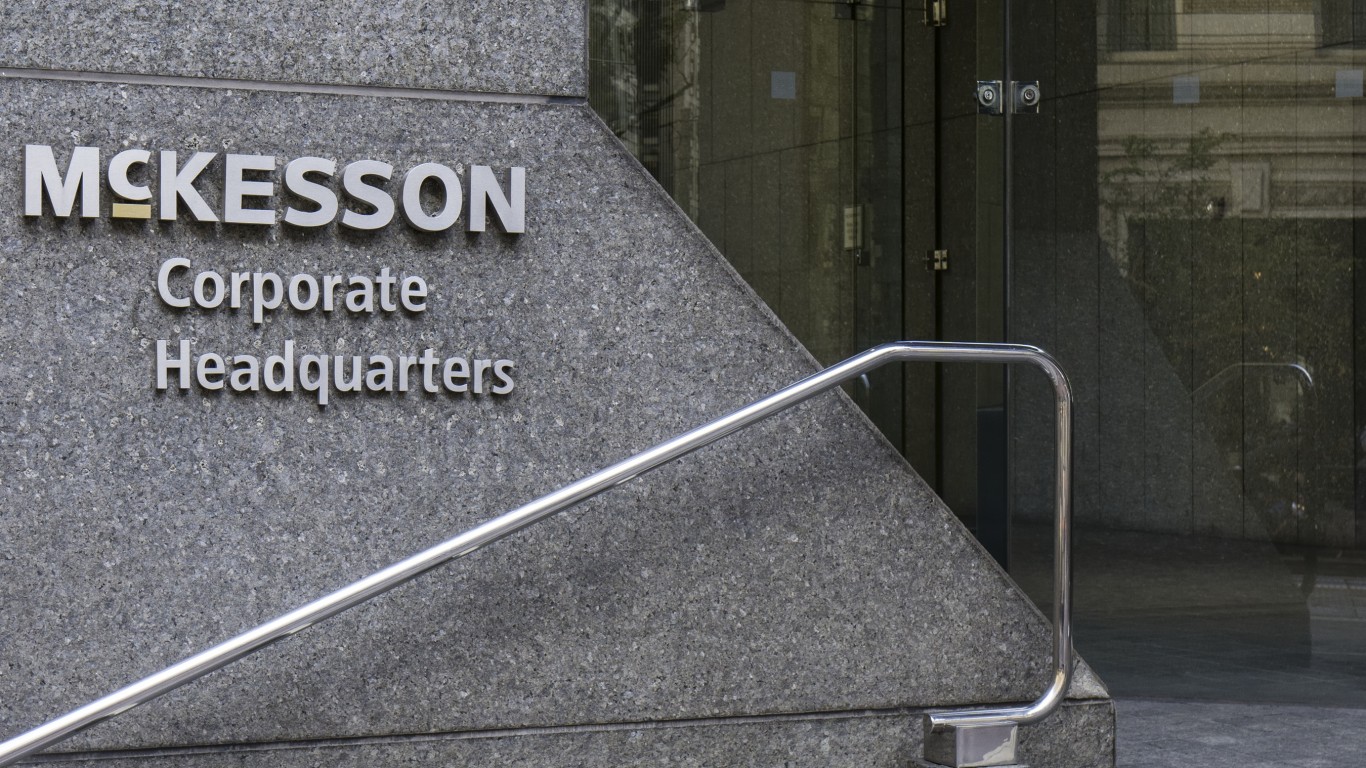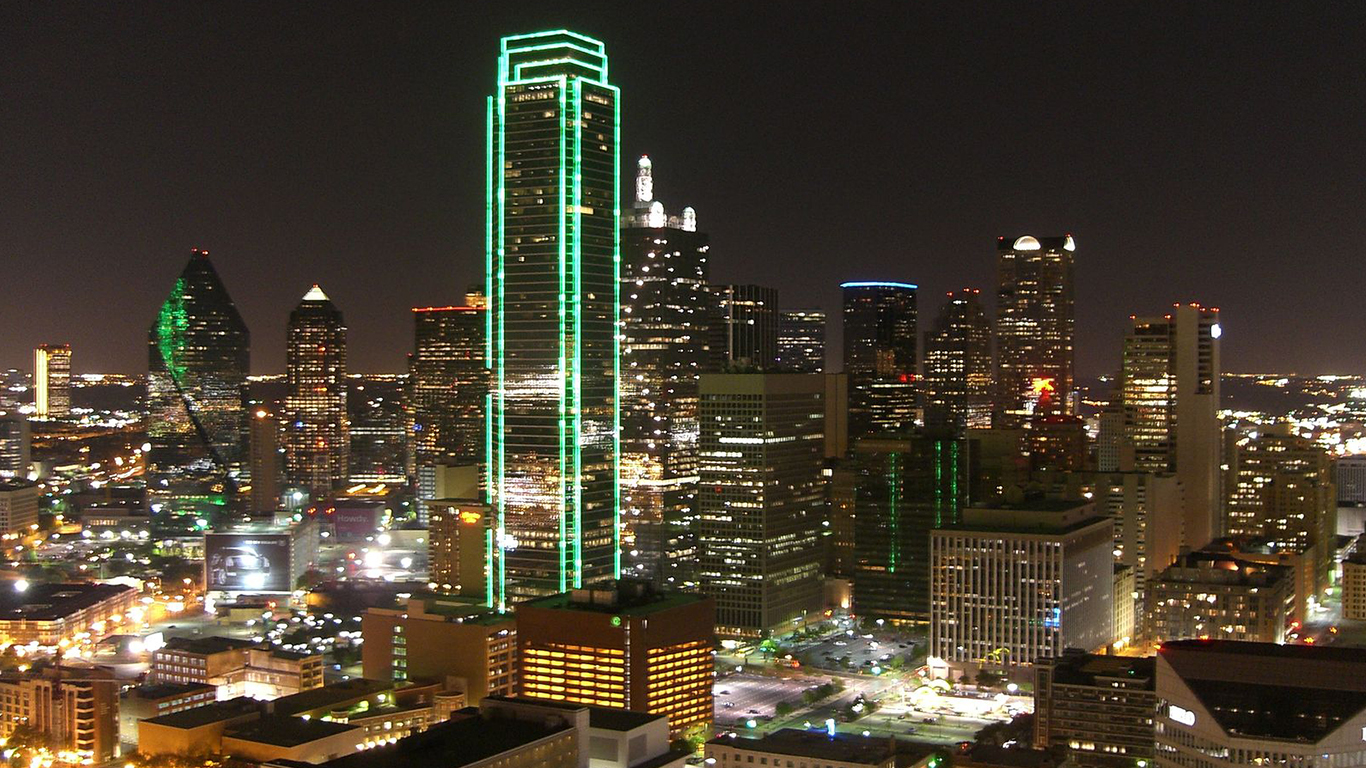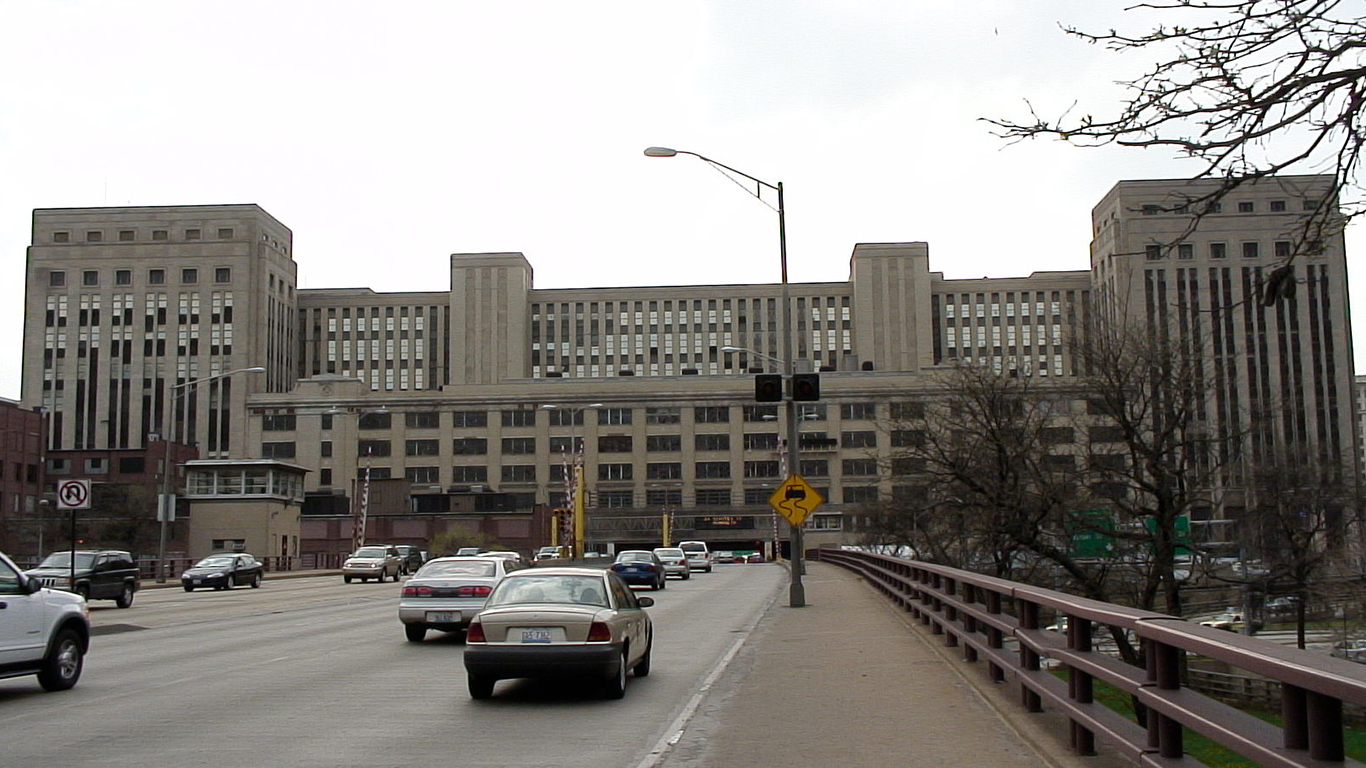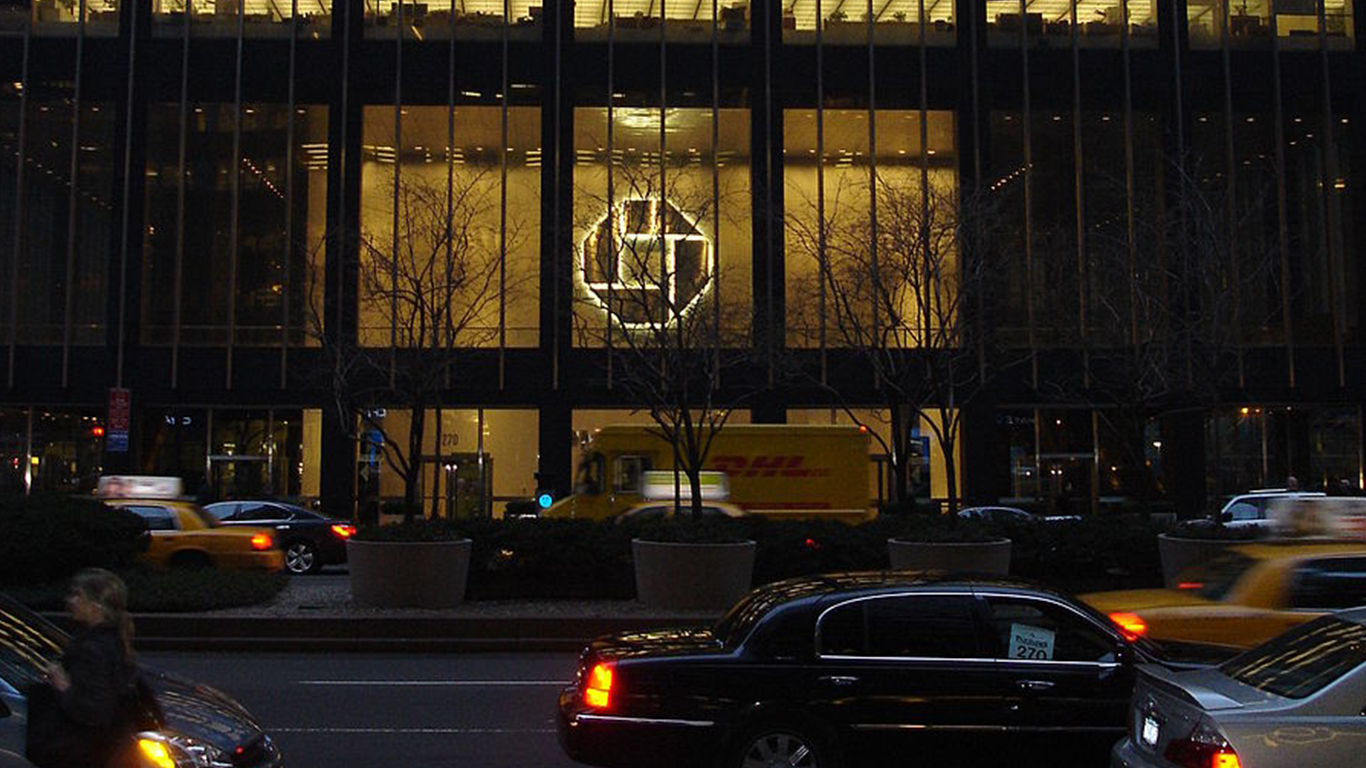Special Report
1 Out of 3 Fortune 500 Companies Are Headquartered in These 6 Cities

Published:
Last Updated:

The composition of the Forbes Fortune 500 — the annually published list of the largest companies in the United States — has changed a lot over the years. As of October 2017, only 60 of the original 500 companies were even still in business.
While the largest American corporations by revenue have changed a great deal over time, the places they can be found in have changed less so.
Nearly 180 of the nation’s 500 largest companies are headquartered in just six major cities. These cities, on the whole, have been home to the nation’s largest companies for decades, and even centuries in some cases. While the corporations themselves may come and go, the benefits to business offered by major population centers with existing infrastructure, massive talent pools, and other major organizations with which to do business means these cities will continue to be business hubs.
24/7 Wall St. reviewed the most recent version of the Forbes Fortune 500 to identify the U.S. metropolitan areas that contain the most Fortune 500 headquarters. Revenue figures listed are not necessarily the most recent annual revenue data, but are the most recent as of the last update of the Forbes list.
Click here to see the six cities that are headquarters to the most Fortune 500 companies

6. San Francisco metropolitan area
> Fortune 500 headquarters: 18
> Population: 4,727,357 (12th largest)
> Largest public company by revenue: McKesson, $198.53 billion
> Other notable companies: Chevron, Alphabet
Compared to the nearby San Jose metropolitan area, which includes Silicon Valley, San Francisco has a higher share of non-tech Fortune 500 companies. However, it still is home to many of the largest tech companies in the country, notably Google parent company Alphabet, social media giant Facebook, and software conglomerate Oracle. While San Francisco’s major corporate headquarters are spread across the metro area — Facebook is in Menlo Park and Alphabet is in Mountain View — several are located in downtown San Francisco. These include McKesson, which is the highest-revenue company in the Bay Area, and Wells Fargo, one of the largest banks by total assets.
[in-text-ad]

5. Minneapolis-St. Paul metropolitan area
> Fortune 500 headquarters: 18
> Population: 3,600,618 (16th largest)
> Largest public company by revenue: UnitedHealth Group, $201.16 billion
> Other notable companies: Target, Best Buy
Generally, the most populated cities tend to have more fortune 500 companies. The four metropolitan areas with the most companies each are among the five most populous. Minneapolis-St. Paul, however, has much more corporations relative to its size. In the metro area of 3.6 million, there are 18 Fortune 500 corporate headquarters. That is only three fewer than Houston, a metro area with almost double Minneapolis’ population. The city has the 16th largest population but is tied with San Francisco as the host of the fifth-most Fortune 500 headquarters.
The largest company by revenue in the the Twin Cities by far is UnitedHealth Group, the largest healthcare insurer in the United States, located in Minnetonka, to the west of Minneapolis. The Twin Cities proper each also have a number of the region’s Fortune 500 companies. Minneapolis is home to six, including retail giant Target, and St. Paul is home to three, including conglomerate 3M.

4. Houston metropolitan area
> Fortune 500 headquarters: 21
> Population: 6,892,427 (fifth largest)
> Largest public company by revenue: Phillips 66, $91.57 billion
> Other notable companies: Sysco, ConocoPhillips
Of the 500 largest companies in the United States, 21 are headquartered in the Houston metro area. Many of those companies in and around the city are there because of the presence of the natural resource that put Houston on the map: oil. Since the discovery of oil in the area in the early 1900’s, Houston became, and has remained, one of America’s preeminent oil towns. In addition to oil-industry Fortune 500 companies like Halliburton, Kinder Morgan, Occidental Petroleum and EOG Resources, two of the three largest Houston-based companies are energy companies Phillips 66 and ConocoPhillips.
One of the largest cities in the country, Houston’s corporate landscape is not dominated exclusively by energy firms. Food distribution company Sysco and waste and environmental services company Waste Management are also headquartered there.

3. Dallas metropolitan area
> Fortune 500 headquarters: 22
> Population: 7,400,479 (fourth largest)
> Largest public company by revenue: Exxon Mobil, $244.36 billion
> Other notable companies: AT&T, Energy Transfer Equity
The largest company by revenue in the Dallas metropolitan area — oil giant Exxon Mobil — is not located in the city itself, but rather in nearby Irving. Texas accounts for 21% of total U.S. energy output, and about half of total crude oil production, and so it might be expected that Dallas — the state’s most populous metropolitan area — would be dominated by energy companies.
However, compared to Houston, the Dallas metro area, which includes Fort Worth, Plano, and Irving, has a diverse group of industries represented in the Fortune 500 companies headquartered there. The region is home to two major airlines — American Airlines in Fort Worth and Southwest in Dallas proper. Other notable companies headquartered there include AT&T, Kimberly-Clark, and J.C. Penney.
[in-text-ad-2]

2. Chicago metropolitan area
> Fortune 500 headquarters: 33
> Population: 9,533,895 (third largest)
> Largest public company by revenue: Walgreens Boots Alliance, $118.21 billion
> Other notable companies: Boeing, Archer Daniels Midland
The third largest U.S. city and the economic nerve center of the Midwest, Chicago is home to the headquarters of 33 of the largest companies in the United States. Corporate headquarters in and around the Windy City include Allstate, Boeing, McDonalds, Motorola Solutions, and the parent company of the department store chain that recently filed for bankruptcy protection, Sears Holdings. Walgreens Boots Alliance is the largest company in the metro area by far, with over $118 billion in revenue in fiscal 2017, more than all but 18 other public companies nationwide.
Only about a third of the Fortune 500 companies headquartered in the Chicago metro area are in the city proper. The majority are located in smaller cities in the region like Deerfield, Glenview, Lake Forest, and Northbrook.

1. New York metropolitan area
> Fortune 500 headquarters: 65
> Population: 20,320,876 (the largest)
> Largest public company by revenue: Verizon, $126.03 billion
> Other notable companies: JPMorgan Chase, Citigroup
The greater New York area is the most populous metropolitan area in the United States. Home to the corporate headquarters of financial giants like JPMorgan Chase and Morgan Stanley, it is often called the financial capital of the world. But the city of millions is home to 65 different Fortune 500 companies from a variety of industries, including airlines, telecom service providers, pharmaceuticals, and television.
Manhattan only accounts for about 1.6 million of the greater New York metropolitan area’s population. In all, the area includes 20.3 million people over three different states, and cities such as Newark and Hoboken. Still, the vast majority of the metropolitan area’s Fortune 500 companies are headquartered on the island. The few exceptions include JetBlue Airways, which is based in Long Island City in Queens, and Johnson & Johnson, in New Brunswick, New Jersey.
The thought of burdening your family with a financial disaster is most Americans’ nightmare. However, recent studies show that over 100 million Americans still don’t have proper life insurance in the event they pass away.
Life insurance can bring peace of mind – ensuring your loved ones are safeguarded against unforeseen expenses and debts. With premiums often lower than expected and a variety of plans tailored to different life stages and health conditions, securing a policy is more accessible than ever.
A quick, no-obligation quote can provide valuable insight into what’s available and what might best suit your family’s needs. Life insurance is a simple step you can take today to help secure peace of mind for your loved ones tomorrow.
Click here to learn how to get a quote in just a few minutes.
Thank you for reading! Have some feedback for us?
Contact the 24/7 Wall St. editorial team.